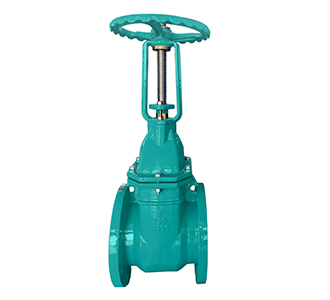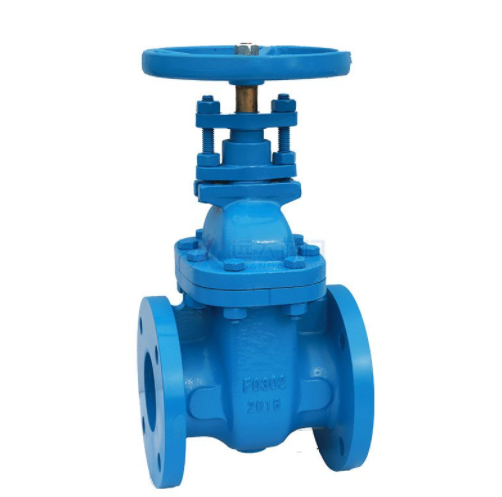
The main difference between cast iron and carbon steel valves is the difference in carbon content, which directly affects the strength and plasticity of steel.
Carbon Steel vs Cast Iron
Cast iron is an alloy of Iron; it contain iron as its main metal together with a Carbon percentage which is greater than 2%. Generally, the amount of carbon present varies from 2-4%. Silicon is also found to be another alloying element in Cast Iron with a rough percentage around 1-3% by weight. The presence of these different elements affects the color and the quality of the Cast Iron produced. Certain other impurities such as carbide and graphite can also influence the initiation of cracks in the metal.
Cast Iron has a lower melting point than the Iron element. This is because Iron contains other material as impurities. Therefore, it is easy to be casted into molds. Casting is a manufacturing technique where the liquid material is poured into molds and left to solidify. The solidified material is called the ‘casting’ and, once the solidifying is complete, the material can be removed from the mold. Cast Iron is a brittle material which is often cheap. It also has higher heat tolerance level with a high thermal capacity. However, the electric and thermal conductivity is relatively low.
Steel is composed of Iron as the main alloying metal with Carbon as the principal second component with a weight percentage around 2.1%. The inclusion of elements such as Chromium makes it possible to produce better quality grades of steel, such as stainless steel. As the name implies stainless steel is resistant to corrosion. This is because Chromium has a higher oxidation potential which in turns protects the Iron from being oxidized upon the exposure to air and moisture.
Steel possess several desirable properties which make it a suitable construction material. Steel has a relatively high viscosity and is difficult to cast as its melting point is higher than cast Iron. It is also milder than cast iron. Unlike cast Iron, steel doesn’t break easily. Instead, it forms chips when grinded and is malleable. Steel has more tensile strength than cast Iron. However, the strength of each material differs on the context of usage. Steel is mainly used for construction, for beams and also for the production of utensils.
Cast iron is cheaper than steel, and it has a low melting point with an ability to mold into any form or shape because it does not shrink when it gets cold. Steel is made with a controlled amount of carbon, whereas cast iron can have any amount of carbon. Carbons and other metals like chromium are added to the iron to make alloys and different qualities or grades of steel, such as stainless steel.
Comparison Talbe Between Steel and Cast Iron
| Parameters of Comparison | Steel | Cast Iron |
| Definition | Steel is called an alloy of iron. | Cast iron is also an alloy of iron. |
| Presence of Carbon | Steel has got fewer presence of carbon approximately less than 2%. | Cast iron has got more than 2% of carbon approximately more than 4%. |
| Properties | Ductile and malleable | The random motion of molecules. |
| Form of carbon | Iron carbide | Graphite or iron carbide or can be both. |
| Melting point | More than cast iron | Lower than steel. |
| Fluidity | No fluidity | Excellent fluidity |
Cast Iron Gate Valve
Cast Iron Gate Valve is suitable to fit between PN6, PN10/16 or ANSI 150 flanges (subject to configuration) and designed for general purpose, industrial and HVAC applications; hot and cold water heating installations and where a tight shut off is required. A flanged, handwheel operated manual gate valve with Brass stem, Cast Brass seat or Cast Bronze (ANSI 150) and GG25 Cast Iron body.
Design & Manufacture Standards of Cast Iron Gate Valve
Cast iron gate valves may be designed and manufactured in accordance with a series of international standards:
- American Standards: MSS SP 70; MSS SP 128; API 595; API 604; AWWA C-509; AWWA C-515; AWWA C-500; AWWA C-560; ASME B16.10; ASME B16.1; ASME B16.42; ASME B1.1, B1.5, B1.8, B1.20.1, B18.2.1, B18.2.2.
- ISO & Chinese Standards: GB/T 12232; GB/T 12221; GB/T 12220; GB/T 12226; GB/T 12227; GB/T 13927; GB/T 1047/ 1048; GB/T 17241; JB/T 9092; ISO 5996; ISO 7259; ISO 5209; ISO 5752; ISO 5208; ISO 7005-2; ISO 5211; ISO 185; ISO 1083; ISO 5922.
- European Standards: BS 5150; BS 5151; BS 5163; BS 3464; EN 1171; EN 545; EN 558; EN 1092-2; EN 12266-1/ 12266-2; EN 12351; EN 12516-3; EN 12516-4; EN 1047; DIN 3352; DIN 3202; DIN 2501; DIN 3230; NF E29-324.
- Japanese & Korean Standards: JIS B2031; JIS B2062; JIS B2043; JIS B2044; JIS B2052; JIS B2002; JIS B2212; KS B2350; KS B2306; KS B1511; KS B2304.
- Common Pressure Ratings: PN10, PN16, 5K, 10K, Class 125, Class 250, Class 150, Class 300.
Functions and Appications of Cast Iron Gate Valve
The cast iron gate valve, furnished with cast gray iron or ductile iron body and bonnet, is a linear-motion manual valve that uses a typically flat closure element perpendicular to the process flow, which slides into the flow stream to provide shutoff. It is designed primarily for on-off services as a block valve, where the valve is operated frequently. Cast iron gate valves do not handle throttling applications well because they provide inadequate control characteristics. They are widely applied for low-pressure and ambient-temperature utility services such as water supply, sewage treatment, gas supply, district heating piping, irrigation projects, air conditioning systems, as well as food processing industry, chemical and petrochemical industry, pharmaceutical and powder industry.
Cast iron gate valves may be optionally furnished with a series of construction characteristics:
- Outside screw & yoke (OS&Y) rising stem; non-rising stem (NRS).
- Solid wedge disc; flexible wedge disc; double disc, split wedge; double disc, parallel disc; resilient wedge (rubber encapsulated).
- Metal seated; soft seated/ resilient seated.
- End connections: RF/FF flanged; threaded.
- Operation: handwheel; gear box; electric or pneumatic actuator.

We are a Cast Iron Valve Supplier, please feel free to contact us if you need them.
Related Tags :
Ten articles before and after
One day in Zeco, celebrate the birthday of the motherland Supply
How To Avoid Pressure Instability Caused By Strainer Valves?
Custom Happy Mid-Autumn Festival!
Will Stainless Steel Valves Rust?
Classification And Working Principle Of Stainless Steel Ball Valve
The Working Principle And Features Of Cast Iron Gate Valve Manufacturer China












